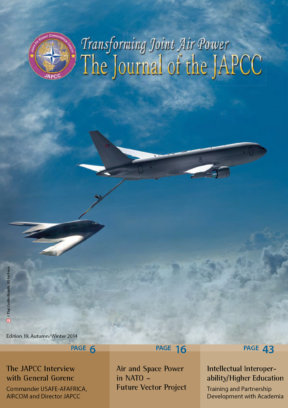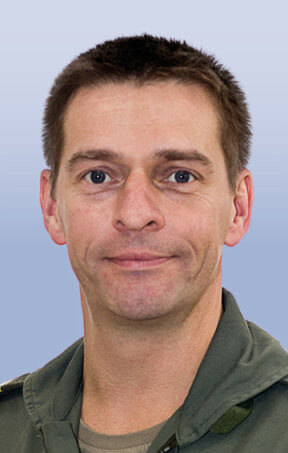Back to 1913
At that moment in history, both Germany and The United Kingdom (UK) had a powerful desire to enlarge their Navies. Germany strived to extend its influence in the world and become a global player. The UK wanted to maintain and consolidate its role as a global player and Sea Power nation. It was quickly recognized that airborne assets would become a fundamental component of maritime warfare and would gain an increased importance in sea combat. After initial resistance by German Naval leadership, the Kaiser provided decisive guidance on the matter of establishing a German Naval aviation component.
On 3 May 1913, the ‘Deutsche Kaiser Wilhelm II’ enacted a decree establishing the ‘Marinefliegerkräfte’. With that decree, two commands were established: the ‘Marine-Luftschiffabteilung’ and the ‘Marine-Fliegerabteilung’, one for airships – the famous Zeppelins – and one for fixed wing aircraft. The increasing significance of the newly founded naval aviation commands are impressively shown by these numbers: at the beginning of World War I (WWI), the naval aviation commands included only 490 members, by the end of the war they totalled approximately 16,000 members! This was quite an achievement considering the entire German Navy today consists of approximately 13,000 members.
After WWI, the ‘Treaty of Versailles’ forbid Germany from possessing any kind of military forces. However, Germany was able to keep their know-how and was also able to train aviation personnel by sidestepping official political restrictions. This illegal behavior ended in 1935 with a unilateral declaration by the ‘Third Reich’ to reclaim its military sovereignty. Unfortunately the optimistic mood this declaration created in the Navy quickly changed when all its flying assets became part of the newly founded Air Force. However, the maritime aircraft and aviators maintained their former Naval organizational structures within the Air Force and were even recognized as ‘Seeflieger’. Regardless, they were still completely dependent on the Air Force and their decision-makers despite keeping their Naval heritage.
During World War II (WWII), the ‘Seeflieger’ were poorly supported compared to the units founded entirely within the Air Force. This lack of support resulted in fewer assets, insufficient training, poor innovation and naval focused technological developments. These negative factors resulted in inferior support of the naval air forces because the naval aviators were forced to perform ‘air warfare above the sea versus naval warfare in the air’. These two concepts reflect a completely different philosophy.
After WWII, the lessons identified and learned from this era were taken into consideration when recreating the German Armed Forces. Unlike after WWI, Germany was completely demilitarized after WWII. In 1949, Germany formed a nascent planning group at Bremerhaven to establish initial plans for the formation of a new Naval Aviation Group. This time, Germany focused on the unique operational requirements of a completely new West German Navy. These requirements were based on the objective of defending the North and Baltic Seas with a contingent of fighter, reconnaissance and anti-submarine aircraft and helicopters. In the mid-1950s, five Naval Air Wings were officially established but only four were operationally capable. Those four Air Wings included two fighter wings, one patrol wing and one helicopter wing.
The planning and implementation phase of Naval Aviation in East Germany took a little bit longer. The ‘Volksmarine’ officially commissioned its first helicopter wing in 1963. At the end of the Cold War, the ‘Nationale Volksarmee’ (NVA) had two wings at its command: one helicopter and one fighter wing.
Change of Operations
During the Cold War, (West German) Naval Aviation focused on reconnaissance and surveillance, naval fighter support and anti-submarine warfare with the main exercise and training areas were over the North and Baltic Seas. This changed profoundly in the early 1990s with participation in their first official military operations post-WWII. This change continued as Naval Aviation expanded into support for worldwide combat operations. These operations included support for mine clearing after the first Gulf War, Operation SHARP GUARD in the Adriatic Sea, support to the UNOSOM II / OPERATION SOUTHERN CROSS, OPERATION ENDURING FREEDOM and currently ATALANTA, the mission against piracy at sea.
After 20 years of actively supporting naval operations such as ATALANTA, it is clearer today than ever before that naval air assets are an essential part of future naval operations. The unique capabilities of naval air assets improve the situational awareness of the supported fleet, operate with higher speeds than surface ships and provide enormous flexibility with their organic helicopter and fixed wing aircraft. Aircrews can easily adapt their mission according to changing operational requirements. History has proven that the distinctive capabilities of naval aircraft and their uniquely educated and trained personnel are necessary to enable the full operating capabilities of naval forces.
Fit for the Future
To prepare the German Naval Aviation Fleet for the future and to remain capable and agile despite planned defence budget cuts, the German Navy has significantly reorganized Naval Aviation. The first, and probably most dramatic, change is the decision to transfer naval fighter aircraft (then the PA 200 Tornado) to the Air Force, reducing Naval Aviation to two wings, with the Air Force providing the fighter capabilities. One wing located at Kiel-Holtenau (equipped with SAR helicopters Mk 41 SEA KING) and the other at Nordholz (equipped with Maritime Patrol Aircraft, first the BREGUET ATLANTIC BR-1150, followed by the P-3C ORION and organic helicopters MK 88A SEA LYNX). This decision is defendable from a financial viewpoint, but has major repercussions with regard to the capabilities of the German Navy. Using fixed wing fighters from the Air Force diluted naval specific knowledge, expertise, experience, tactics and procedures in the years that followed. This makes it clear naval requirements will only truly be met by forces within a naval environment and under a naval authority.
The latest, most visible change of the German Naval Aviation Community is the organizational restructuring and geographical relocation. Previously, the German Naval Air Command was integrated into the Naval Command or Maritime Headquarters. Since October 2012, German Naval Aviation was given its own command component, the Naval Aviation Command, located at Nordholz. Another revolutionary measure was the relocation of Naval Air Wing 5 from Kiel to Nordholz. This resulted in all German Naval Aviation assets located at one single base, designated ‘Marinefliegerstützpunkt Nordholz’. This resulted in the Naval Aviation Command, Naval Air Wing 3 ‘Graf Zeppelin’, (equipped with the P-3C Orion and DO-228) and Naval Air Wing 5 (equipped with the Sea King and Sea Lynx) being unified and operating from Nordholz. This will significantly increase the effectiveness and efficiency of the Naval Air community in Germany.
To fulfil its unique requirements in the near future, the German Navy is planning to keep its Maritime Patrol Aircraft, the Lockheed P-3 ORION, in operation for the next 15 to 20 years. It is planned to replace the ‘Sea King’ and ‘Sea Lynx’ helicopters, this is still under review. With this mixture of Naval Air assets, the German Navy will ensure that the mission requirements demanded will be accomplished. These missions include Anti-Submarine Warfare (ASW), Anti-Surface Warfare (ASUW), Intelligence, Surveillance and Reconnaissance (ISR), Search and Rescue (SAR), Boarding and Transport.
Going New and Different Ways
It is not only necessary to adjust the structure and assets of an organization; sometimes it is more important to alter the philosophy of how to navigate obvious challenges with shrinking resources. Two examples of adjustments which were recently initiated by German Naval Aviation are helicopter pilot training and the Maritime Patrol Aircraft (MPA) Pooling and sharing initiative.
Helicopter Pilot Training
The German Navy faced extreme challenges with helicopter pilot training. Military flight hours were getting more expensive and negotiating contracts between the Armed Forces, government and industry was becoming difficult. For this reason, the Navy is currently leasing a civilian helicopter – an EC 135 – to meet its helicopter training requirements. The main advantage of this arrangement is the aircraft’s high availability rate permitting better training continuity.
MPA Pooling and Sharing Project as Part of the NATO Smart Defence Initiative (SDI)
One outcome of NATO’s 2010 Lisbon summit was, Allied Command Transformation (ACT) formation of a task force to identify potential pooling and sharing projects. MPA were identified as a critical capability shortfall due to limited availability (especially during that time frame) and led to the idea of creating an MPA pool within NATO. In this early state, the vision was to form this pool based on common missions and training as well as fulfilling the various national military requirements. The long term vision was – and still is – to use this pool to meet future EU and NATO operational requirements as well.
The DEU Navy was keen to contribute to this project. In October 2011, DEU took the lead in this project by developing the required organizational structures. Spain, Luxembourg and Poland were partners from its inception and indicated they would provide at least one MPA to the Pool. Italy, Great Britain, Sweden and Greece were also highly interested in this ambitious project and joined as observer nation. Following numerous multinational workshops, the MPA Coor1dination Cell (MPA CC), located in Glücksburg, Germany declared Initial Operating Capability in July 2012. It is currently manned by the DEU Naval Command for a two year test phase and consists of one DEU P-3C ORION, one ESP P-3M ORION, one ESP CASA CN-235, one LUX FAIRCHILD SW3 Merlin and one POL AN-28 BRYZA. Iceland is also prepared to contribute with their DASH-8 aircraft.
Summary
Over the course of its 100+ year history, German Naval Aviation has continuously adapted to the political and financial challenges that confronted it. The most recent reorganizations will be the foundation for its continued ‘survival’ in the budget constraints of the near future and the changing political and military situation in the world. German Naval Aviation mission requirements evolved and developed based on Germany’s unique national military objectives over that 100+ year history and it will continue fulfilling its missions at the highest level well into the 21st century.












